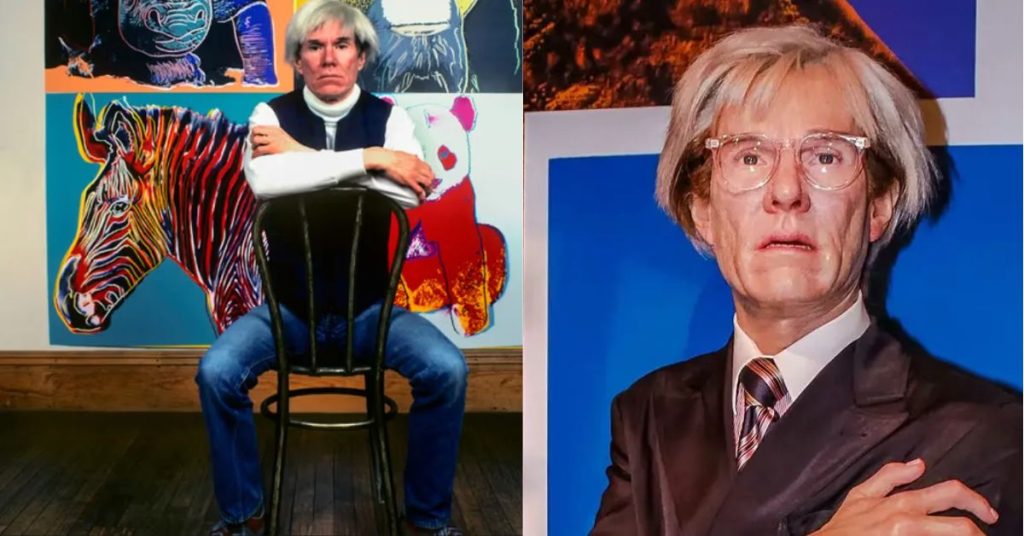Andy Warhol, an American artist, filmmaker, and author, emerged as a leading figure in the pop art movement of the 1960s. His unique blend of art, celebrity culture, and consumerism challenged traditional notions of art and remains influential today. This article delves into the life of Andy Warhol, examining his early years, artistic evolution, significant works, and lasting impact on contemporary culture.
Early Life and Background
Born Andrew Warhola on August 6, 1928, in Pittsburgh, Pennsylvania, Warhol was the youngest of three sons in a working-class Slovak immigrant family. His father, Ondrej Warhola, was a coal miner, while his mother, Julia Warhola, was a homemaker who instilled a love of art in her children. From a young age, Warhol showed an affinity for drawing and pursued his passion by studying commercial art at the Carnegie Institute of Technology (now Carnegie Mellon University).
After graduating in 1949, Warhol moved to New York City, where he began his career as a commercial illustrator. His talent quickly garnered attention, leading to work for major publications such as Vogue and Harper’s Bazaar. This period in Warhol’s life was marked by the blending of fine art and commercialism, a theme that would define his later work.
The Rise of Pop Art
By the mid-1950s, Warhol began to explore the intersection of art and consumer culture. He was inspired by the everyday objects and images that surrounded him, such as advertisements and product packaging. This fascination led to the birth of pop art, a movement that celebrated popular culture and challenged the elitism of traditional art.
Warhol’s early works included his iconic Campbell’s Soup Cans series, which featured 32 canvases, each depicting a different flavor of the popular soup. This series was revolutionary, as it transformed an everyday product into a work of art, prompting viewers to question the nature of art itself. Warhol famously stated, “I used to think that it was very important to be different. But now I think it’s very important to be the same.” This sentiment encapsulates the essence of pop art and Warhol’s approach to creativity.
Techniques and Innovations
Warhol’s artistic process was characterized by a unique method of production known as “silkscreen printing.” This technique allowed him to produce multiple copies of an image, further blurring the lines between fine art and commercial production. By using silkscreens, Warhol could mass-produce images, emphasizing the repetitiveness of consumer culture. This method became synonymous with his work, as he famously stated, “In the future, everyone will be world-famous for 15 minutes,” highlighting the transient nature of fame and the commodification of art.
Warhol’s fascination with celebrity also played a significant role in his work. He produced a series of portraits of famous figures, including Marilyn Monroe, Elvis Presley, and Jacqueline Kennedy, using bright colors and bold designs. These portraits not only captured the essence of the celebrities but also commented on the fleeting nature of fame and the ways in which society idolizes individuals.
The Factory: A Hub of Creativity
In the 1960s, Warhol established his studio, known as “The Factory,” which became a cultural hotspot for artists, musicians, and celebrities. Located in New York City, The Factory was a place where Warhol collaborated with various artists and experimented with new ideas. It was during this time that he began producing films, including Chelsea Girls (1966) and Empire (1964), which further pushed the boundaries of traditional cinema.
The Factory was not just a studio; it was a social scene where creativity flourished. Warhol surrounded himself with a diverse group of people, including his famous “superstars,” such as Edie Sedgwick and Valerie Solanas. These individuals played a vital role in his work, becoming both subjects and collaborators. The Factory’s atmosphere of experimentation and hedonism mirrored the cultural shifts of the 1960s and 70s, making it a symbol of the era.
Major Works and Exhibitions
Warhol’s artistic repertoire was vast, spanning various mediums including painting, photography, film, and music. Some of his most notable works include:
- Marilyn Diptych (1962): This painting features 50 images of Marilyn Monroe, half in vibrant colors and half in black and white. It reflects Warhol’s fascination with celebrity and the duality of fame—its allure and its emptiness.
- Brillo Boxes (1964): These sculptures replicated the packaging of Brillo soap pads, challenging the viewer’s perception of what constitutes art. By presenting commercial products as art, Warhol questioned the very nature of artistic value.
- Exploding Plastic Inevitable (1966): This multimedia event combined music, performance, and visual art, showcasing Warhol’s innovative approach to artistic expression. The event featured the music of The Velvet Underground, a band Warhol managed, further solidifying his influence in the music industry.
Warhol’s work was exhibited in numerous prestigious galleries and museums, including the Museum of Modern Art (MoMA) and the Whitney Museum of American Art. His influence extended beyond the art world, impacting fashion, design, and popular culture.
The Later Years
In the 1970s and 80s, Warhol continued to evolve as an artist. He became more involved in the fashion industry, working with designers and producing art for high-profile campaigns. His work during this period often reflected themes of consumerism and technology, with pieces like the Self-Portrait (1986), showcasing his trademark use of color and repetition.
Warhol’s health took a turn when he suffered a near-fatal assassination attempt in 1968 by Valerie Solanas, a radical feminist and former collaborator. This event profoundly impacted his life and work, leading him to explore themes of mortality and identity in greater depth. Despite this setback, Warhol remained active in the art scene, continuing to produce work that resonated with contemporary audiences.
Death and Legacy
Andy Warhol passed away on February 22, 1987, at the age of 58, following complications from gallbladder surgery. His death marked the end of an era, but his influence continues to resonate across various fields. Warhol’s ability to merge art and commerce paved the way for future generations of artists who explore similar themes.
Warhol’s legacy is evident in the work of contemporary artists who draw inspiration from his techniques and concepts. His exploration of celebrity culture, consumerism, and the nature of art has laid the groundwork for discussions about the role of art in society today. Moreover, his work has been the subject of numerous retrospectives and exhibitions worldwide, solidifying his status as a cultural icon.
Cultural Impact
Warhol’s impact on popular culture cannot be overstated. His exploration of fame and consumerism resonates in today’s media-saturated society, where social media influencers and reality TV stars dominate public discourse. His adage about everyone being famous for 15 minutes has become a cultural reference point, encapsulating the transient nature of fame in the digital age.
Moreover, Warhol’s approach to art has influenced various industries, including fashion, advertising, and music. His collaborations with musicians like David Bowie and the aforementioned Velvet Underground exemplify how art can intersect with popular culture, creating a lasting impact.
Warhol also paved the way for the embrace of technology in art. His use of silkscreen printing and innovative multimedia projects anticipated the digital revolution in art-making. Today, many artists employ similar techniques, reflecting Warhol’s lasting influence on artistic practice.
Conclusion
Andy Warhol’s life and work embody a unique intersection of art, culture, and commerce. His exploration of consumerism, celebrity, and the nature of art continues to inspire and challenge contemporary artists and audiences alike. As a pioneer of the pop art movement, Warhol’s legacy endures, reminding us of the power of art to reflect and shape society. Through his innovative techniques and provocative themes, Warhol has secured his place as one of the most influential artists of the 20th century, leaving an indelible mark on the cultural landscape. His life story serves as a testament to the transformative power of creativity and the enduring relevance of art in an ever-changing world.



